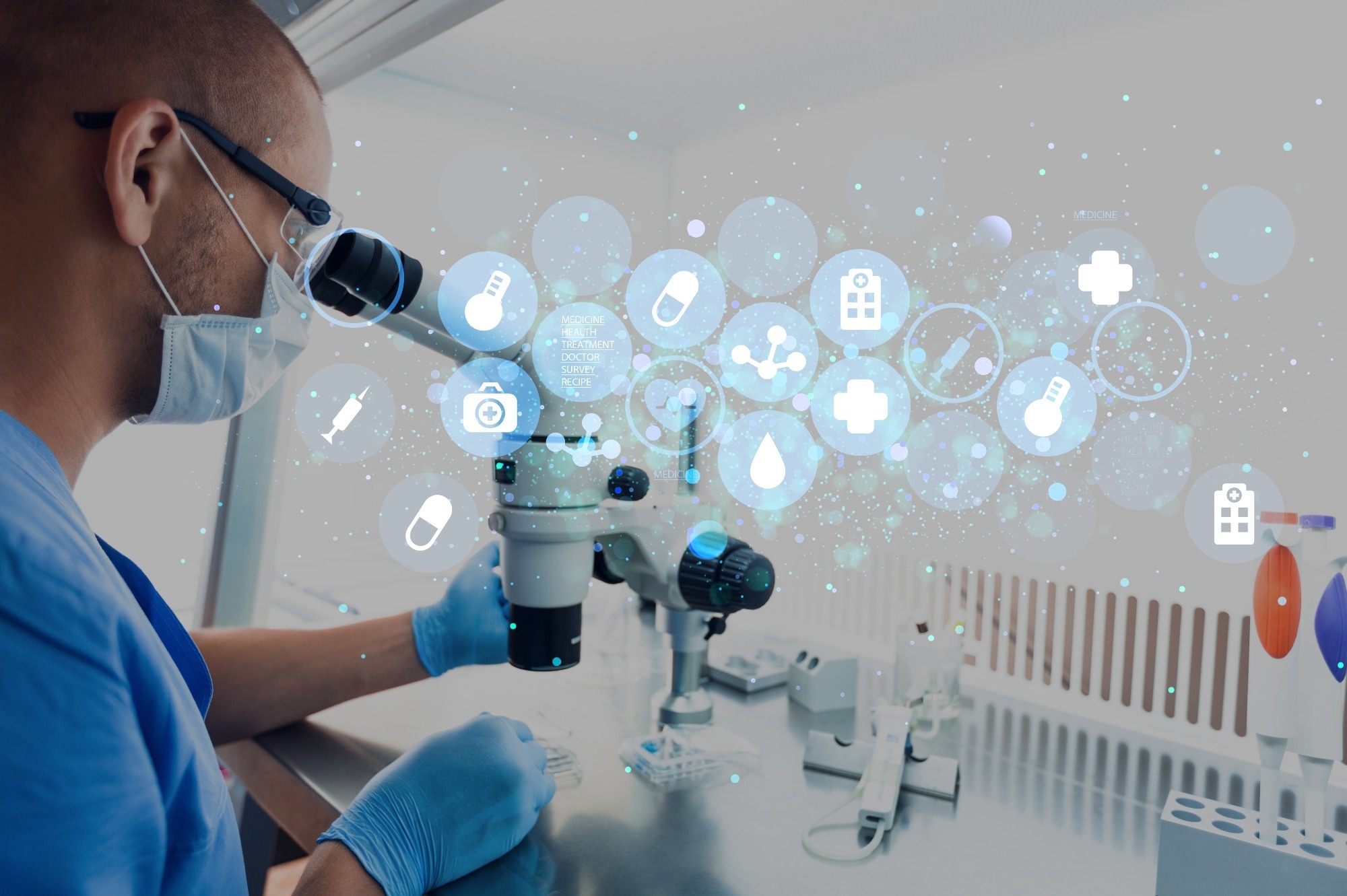The drug discovery process has hitherto been time-intensive and expensive, with a high risk of failure during the clinical trial phase. Introducing artificial intelligence (AI) into the drug discovery process has significantly shortened the timelines and lowered the costs.
In a recent review published in Drug Discovery Today, researchers discussed using deep generative AI models and their diverse algorithms in de novo drug design.
They also presented some of the challenges associated with using these AI models in drug discovery and case studies from the pharmaceutical industry of AI-based drug discovery.
 Study: Unleashing the power of generative AI in drug discovery. Image Credit: Billion Photos/Shutterstock.com
Study: Unleashing the power of generative AI in drug discovery. Image Credit: Billion Photos/Shutterstock.com
Background
High throughput screening in drug discovery was developed to evaluate candidate compounds in bulk, while virtual screening, a complementary process, was designed to screen potential active compounds.
Two strategies are used in the virtual screening process — structure-based screening and ligand-based screening.
Structure-based screening relies on the target’s protein structure and uses molecular dynamic simulations, molecular docking, and similar processes. In contrast, ligand-based screening uses structure similarity searches to screen known active compounds.
With the advent of AI-based computational methods, machine learning and deep learning models are rapidly becoming promising alternatives to virtual screening.
Furthermore, given the huge amounts of data generated in drug discovery, these AI models are proving efficient in processing large datasets and deciphering patterns.
Deep generative models or DGMs are increasingly used in drug discovery, especially for de novo molecule generation, where the model can generate novel structures with specific bioactive properties.
However, despite the immense potential of DGMs to improve drug discovery, their use remains limited. In the present review, the researchers aimed to explore the value of DGMs in designing novel biomolecules with tailored bioactive, pharmacokinetic, and bioactive properties and stability.
DGMs in de novo Biomolecule Design
DGMs are categorized into two groups based on using a molecular graph or the Simplified Molecular Input Line Entry System language or SMILES to describe the structure.
SMILES was used initially in the modeling process, where the molecule's structure was optimized by converting it into a continuous vector in latent molecular space. However, shortcomings in the generated latent molecular space led to the development of algorithms to handle molecular graphs.
The molecular graph models are similar to the human process of drawing atomic and molecular structures with interlinking bonds, which, combined with breaking down each structure into substructures during the model's training, results in a large quantity of data and slows the training speed of the models.
The researchers discussed the use of recurrent neural networks involving gated recurrent units or long short-term memory architectures in the de novo generation of small biomolecules using SMILES.
This review section also delved deeper into using variational autoencoders and their various extensions in the de novo drug design process.
Applications of DGMs in Drug Design
While DGMs are valuable in designing biomolecules with desired physical and bioactive properties, they can also help modulate properties such as solubility to enhance the molecules' pharmacokinetic characteristics.
Furthermore, DGMs can help conceptualise the synthesis of the designed de novo molecules and have also been applied in drug repurposing and designing drugs with multiple targets.
The reviewers examined numerous studies where DGMs had also been explored extensively recently for designing drugs against severe acute respiratory syndrome coronavirus 2 (SARS-CoV-2).
One study used recurrent neural networks with transfer learning to identify potential SARS-CoV-2 protease ligands. Another study used SMILES to design biomolecules that could target the major protease of SARS-CoV-2.
Some of the other studies discussed in the review used DGMs to produce bioactive compounds against Plasmodium falciparum and Staphylococcus aureus and to design agonists of the dopamine type 2 receptor.
Since the performance of the deep learning models also depends on the datasets used for training these models, evaluating the datasets for size, quality, coverage, validity, and diversity is essential.
The review discussed some prominent tools, such as GuacaMol and MOlecular SEtS or MOSES, used to assess synthetic feasibility, drug-likeness, and other benchmarking criteria.
Collaborations with Pharmaceutical Companies
The rapidly growing field of AI applications in drug delivery has also resulted in collaborations between major pharma and AI companies to streamline the drug discovery process, including biomarker discovery, diagnostic tool development, de novo drug design, and many more.
The review covers some of the major collaborations since 2019, including those between Merck and Iktos, Sanofi and Insilico Medicine, Sanofi and Atomwise, Novartis and Isomorphic Labs, etc.
Also mentioned in the review are some AI-developed drug candidates that failed clinical trials, including a cancer drug designed by the United Kingdom-based company Exscientia.
Conclusions
To conclude, this highly comprehensive review provided an in-depth understanding of the functioning and application of DGMs not only in de novo drug design and other steps of the drug discovery process, including fine-tuning pharmacokinetic properties and streamlining the development process.
The authors also addressed the need for efficient benchmarking tools in the AI-based drug design process. They explored the numerous collaborations between AI and pharmaceutical companies in the past half a decade.